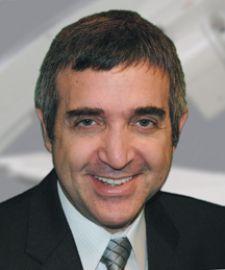
Jeanne-Marie Phillips, president, HealthFlash Marketing Communications
With the rush to convert to digital, we sometimes forget the big picture, including what comes next. This begs the question, what will happen when PACS is the incumbent? We posed this question to a team of experts to see from their perspective how IT is transforming healthcare.
A highly knowledgeable group of CEOs and product managers from organizations heavily involved in PACS ran with the topic. The group included Bill Culton, product manager, Diagnostic Solutions for ASPYRA; Peter J. Karoly, chairman and CEO of eRad; John Paganini, director of Product Management, Guardian Healthcare Systems; Henri “Rik” Primo, RIS/PACS national director, Strategic Relationships for Siemens Medical Solutions Inc. USA; and John Mazur, president, Integrated Modular Systems Inc.
Focal Point (FP): Once your PACS solution is fully integrated into a facility, what steps should be taken to allow the system to evolve with your client’s growth and changing needs?
Mazur: We are seeing more sharing of resources where the radiologists from one site are reading cases from another site. We provide the capability of a virtual archive in a multiterabyte RAID that accommodates this widespread evolution.
Paganini: Our Flowpoint solution has an integrated PACS, but Guardian also sells the PACS separately, so the viewer can be called upon as a personal preference. Most viewers are interoperable so this provides a more flexible experience.
Colton: Software-wise, as long as a customer is under support, their systems are upgraded with changing needs free of charge. There might be a small charge to add a license to connect another modality or add additional users.
Karoly: A review of their prior rules, for example, is done to optimize prefetching. Find out if their workflow has changed to modify the existing flowcharted solution that was initially purchased.
Primo: PACS needs to be tightly integrated with the delivery of care in many other specialties besides radiology. The volume of imaging data continues to grow. Multirow CT, digital mammo and multislice MR are examples of modalities that produce 10 times more data than what was produced just two years ago. So, a scalable PACS, both from an infrastructure and application content perspective, and a thorough understanding of the end-user’s requirements by the PACS manager is an absolute must for a successful PACS experience.
FP: PACS revolutionized workflow in radiology. If you had a crystal ball, where do you see IT making another big inroad in healthcare delivery?
Mazur: All of the functionality will be in modules that we sometimes call RIS Pieces. There will be one big RIS to satisfy everyone, with separation for everyone, where security is paramount.
Paganini: Emerging technologies such as CAD, document management and voice recognition all will move to a seamless and transparent integration that we can manage together.
Colton: EMR. We’ll see one portal that will cross over into all the “ologies.” The problem right now is that legacy drag is still there, though we are starting to see commonalities. The key is the doctor. He doesn’t want to have to switch portals just to see different information about the same patient.
Karoly: The next big inroad, at least from a hospital perspective, might be in controlling medical mistakes and misadventures. This should come from all sectors, pharma vendors, fellowship programs, in subspecialties, to provide a safety net to alert doctors. This way a clinician could spend more time with the patient instead of with volumes of different records.
Primo: Optimized, IT-enabled healthcare workflow can eliminate information silos so patient information flows to the authorized care team members who need it enable better collaboration and more informed decision making. The probabilities for making mistakes with paper-based patient management are then avoided.
FP: Do you see government taking a role as the PACS revolution matures with regard to security, standards and EMR-compatibility issues?
Mazur: In pushing the standards of EMR solutions.
Paganini: Yes, by contributing, but not enforcing or regulating innovation and creativity. We trust that the consumer market will help drive the adoption of EMR.
Colton: In creating the Universal patient ID attached to each person – what IAG did for DICOM. Something has to tie the standards together.
Karoly: Not really. There will be enough market moves for healthcare organizations to move vendors and others in the right direction. The free-market system works well.
Primo: Yes, government’s role seems to be clearly in play already (with HIPAA). There is a lack of semantic interoperability, meaning that different terms/vocabularies connote different things to different applications. The DOD and the VA are early pioneers in the EHR movement and the drive toward paperless delivery of healthcare, and they continue to play a key role in helping to shape the future of healthcare delivery.
FP: As HIS, RIS and PACS are offered as an increasingly integrated solution, how do you see your healthcare IT solutions evolving during the next five to 10 years?
Mazur: We can provide the pieces of workflow and technology in whatever functionality they need. While we recognize that many functions are being merged, often the full-tilt solution is not flexible enough.
Paganini: [With] global thinking for best radiology practices, beyond technical standards, much the same way in which HL7 is a global standard within the HIS environment.
Colton: The beauty of the integrated system is a common GUI and systems so you don’t have to retrain because of a mixing and matching scenario.
Karoly: The nuts and bolts are simple if companies conform to HL7 standards. The smaller companies have to be the AVIS of the industry. In the end, big companies simply create the opportunity for the nimble players to get in.
Primo: Over time, the technology becomes an accelerated learning engine allowing the transfer of best practices. Healthcare providers are seeing the value of their imaging and IT investments working toward the same goal: more timely and informed diagnoses, clinical decision making, and care delivery. This will lead to more affordable treatment and better clinical outcomes for every individual patient.
From government involvement to the integration of the RIS/HIS, opinion varies from A to Z. The one common feature we see is the intense focus on the well-being of the patient. While this is a good harbinger at the consumer level, getting there appears as though it might take us through the rapids before we hit calm waters again.
Phillips and Washer have recently formed the Genesis Healthcare Marketing Alliance, offering full-service marketing, visual communications and public relations for the medical equipment and healthcare informatics industries.








 November 29, 2025
November 29, 2025 









